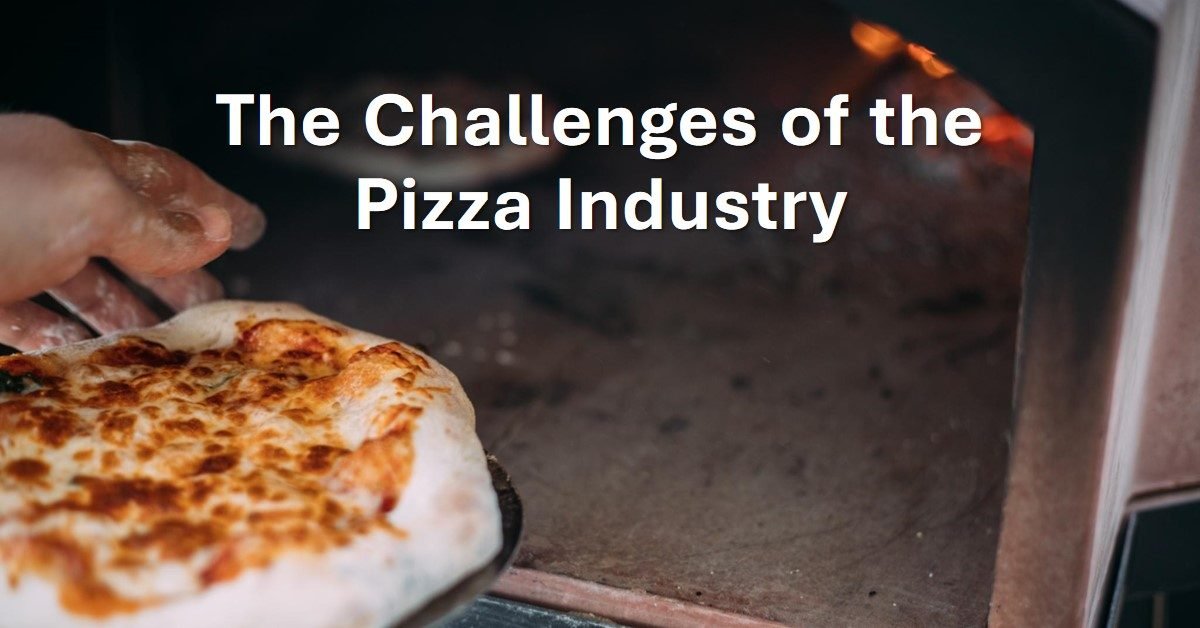When the food industry becomes more competitive with every passing day, I always prefer the sub-categories to eliminate the competition. However, sub-categories in the food industry have also become competitive with the passage of time. Pizza not only satisfies customers’ cravings but also brings different challenges for pizza brand owners like me.
Pizzarias always goes through different hard times, ranging from complex delivery services to bringing something new to the market. Regulatory compliance, sustainability requirements, and evolving customer preferences are making it more difficult for my brand to stand out in the market. Therefore, it has become necessary for me to blend tradition and innovation together to deliver brilliant pizzas to consumers.
What Are The Factors Affecting The Demand Of Pizza?
When I started a brand new pizzeria, I had completed a research that pizza is one of the appealing dishes in the culinary world. The crispy crust, delicious sauce, and gooey cheese always attracted the potential consumers. However, I have faced different factors that affect the demand of pizza.
- Taste Trends And Preferences: The demand for pizza depends on the culinary trends and taste preferences. There are different classic pepperoni and gourmet toppings, such as arugula and truffle oil, depending on the consumer’s tastes to drive demand for a variety of pizzas. I have noticed that artisanal ingredients, gluten-free crusts, and plant-based toppings can influence the pizza demand and customer choice.
- Economic Conditions: It is true that economic factors have an immense role in pizza demand due to evolving consumer spending power, employment rates, and income levels. In good economic conditions, consumers will have more spending power to dine out. However, consumers will be looking for reasonable options in an economic crisis.
- Population Demographics: The composition and size of the population also influence the demand for pizza in a specific area. There is always a higher demand for pizza in areas with higher populations of students, families, and the younger generations.
- Competitive Market: The competitive food industry in the presence of delivery services, fast-food restaurants, independent pizzerias, and pizza chains can affect the demand of pizza. It is important to consider different factors such as brand loyalty, convenience, quality, and pricing to analyze the demand of pizza.
- Promotion and Marketing: It is necessary to focus on the different promotional ad marketing strategies to spread awareness and urge consumers to purchase pizzas. I always prefer attractive loyalty programs with marketing initiatives to engage new customers and retain existing ones.
- Convenience and Accessibility: There are different accessibility and convenience options, such as online ordering systems, dine-in, takeout, and delivery, that impact the demand for pizza. I observed that higher demand is for pizzerias that provide an easy online platform with a reliable delivery system.
- Cultural and Social Influences: It is a fact that casual dining, parties, and social gatherings demand large orders for catering services. It means lifestyle and cultural tradition also influence the demand for pizza in a society.
Who Are Your Three Biggest Competitors In The Pizza Market?
Every slice narrates a story of competition, innovation, and mouthwatering taste in the world of pizza industry. There are three of the top-rated pizza chain that are serving the consumers across the world. It is important to note that top competitors have built their authority with a lasint impression on consumers. These pizza restaurants use custom pizza boxes with logo to solidify their brands further to boost sales.
Domino’s Pizza
Domino is dominating the pizza industry and this business is with an iconic blue and red logo to deliver the fresh and tasty pizzas. This pizza chain has become a leader with moe than 17,000 global stores in more than 90 countries. It serves pasta and pizza to their consumers in the presence of online ordering system, voice-activated ordering, and mobile apps.
Pizza Hut
It is one of the most famous and oldest pizza chain with more than 18,000 restaurants in more than 100 countries. It serves the consumers with a magnficient menu of desserts, wings, pasta, and pizza. Pizza Hut is famous for the innovative pizza creation, stuffed crust, and pan pizza.
Papa John’s
It is a largest pizza delivery chain with more than 5,000 restaurants in more than 45 countries. It is a famous pizza chain due premium and fresh ingredients with the hand-tossed dough. The pizza lovers always appreciate Papa John’s for its authenticity and flavor.
What Was The First Pizza Chain In The United States?
The first-ever pizza chain in the USA was Shakey’s Pizza. Ed Plummer and Sherwood Johnson “Shakey” founded this pizza chain in California in 1954. It has become the most famous and earliest pizza chain in the U.S. It is important to remember that Shakey has more than 500 stores in the United States, the Philippines, Japan, and Singapore.
What Type Of Competition Is Pizza?
The competition in the pizza market is usually known as a monopolistic competition. In this market condition, several firms compete with each other on the basis of different products. However, every firm has sufficient market power because of different factors such as strong brand identity and unique products. It is true that most pizzerias offer similar products, but each tries to differentiate itself with different factors such as marketing techniques, location, price, quality, and taste. It raises competition among the different pizza businesses , and each one has a market share in serving the customers.
Pizza Price Comparison
- Pizza Hut: This pizza restaurant offers a large cheese pizza for a price range of $10 to $15. The charges fo additional toppings are $1 to $2.
- Domino’s Pizza: A lare pizza costs $7 to $10 whereas additional topping charges are $1 to $2.
- Papa John’s: A large pizza price is $10 to$14 with $1 to $2 charges for additional toppings.
- Little Caesars: This pizza chain charges $5 to $6 for a large cheese pizza.
